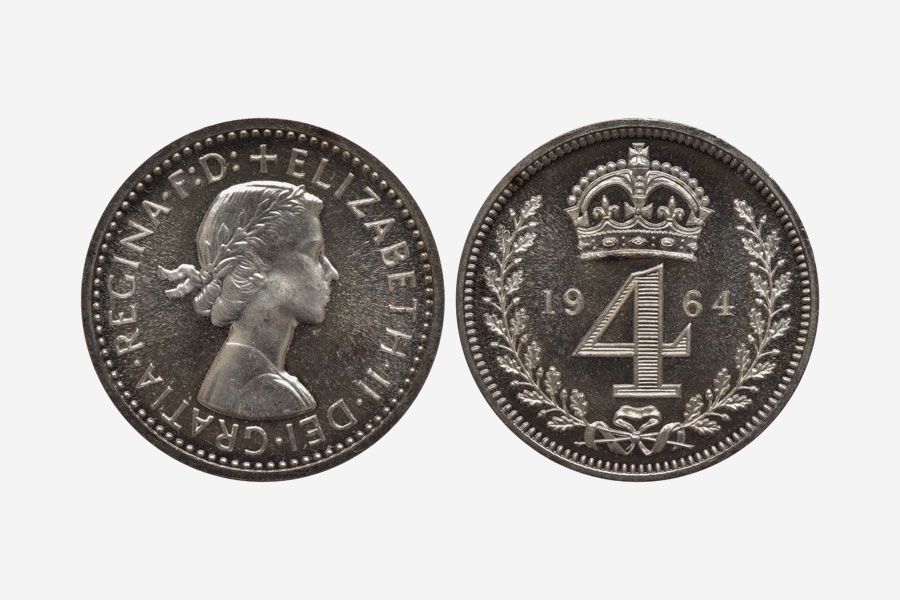For hundreds of years the reigning monarch or their representative has distributed what we call Maundy coins, historically to the poor, or latterly to pensioners who have shown great service to the church and their local community. The special service takes place every Maundy Thursday (the day before Good Friday), historically in London, but during Queen Elizabeth II’s reign, under her instruction, it would be held at different Cathedrals around the country returning to London every now and then. With the 2017 service being at Leicester cathedral every Anglican cathedral in England has now hosted the ceremony.
The word Maundy in Latin means “mandate” or “command” which is used in this context to reflect Jesus Christ’s instruction to his disciples at the Last Supper to love one another. After washing their feet, Jesus told them; “A new commandment I give to you, that you love one another; as I have loved you, that you also love one another. By this, all will know that you are My disciples if you have love for one another.” (John 13: 34-35). This command forms the opening lines of the Maundy ceremony.
The Maundy Thursday service can be traced back to the fourth century where recipients would have their feet washed and were presented with food and clothing. The Royal connection started in 1213 when King John attended in Rochester and by the Tudor age it had become a regular custom for the monarch to attend and the event became known as Royal Maundy. For most of that time the number of recipients would match the monarch’s age. So for example, the last time that Queen Elizabeth presented the coins, which was in 2019 (2020 and 2021 events cancelled due to covid) when she was 93 years old, she distributed the small leather bags of coins to 93 different people. It was also decreed by Henry IV that the amount of money given to the poor should match the monarchs age and so when he was 40 for example, he would distribute 40 pence to 40 different people.
Despite the strong royal connection with the Maundy service, with the reigning monarch being present each year up until 1698, there are no records or reports of the monarch attending any of these ceremonies until 1932 when George V renewed the annual custom which we have become familiar with today.
Despite his short reign even Edward VIII managed to attend the 1936 Maundy service which became one of the few official duties that he carried out. The coins he presented though had the image of his father George V as new coins bearing the new King’s portrait had not been issued.
Designs obviously changed over time with different monarchs although the reverse design that we still see today has been in use for 200 years. The numeral in an oak wreath design was first engraved by Jean Baptiste Merlen who moved to London from Paris in 1815 after working at the Paris mint.
Interestingly, despite the fact that Queen Elizabeth II was on the throne for 70 years, and during that time our everyday coinage had seen 5 different portraits reflecting her changing appearance, the Maundy coins up until 2022 still retained the original image designed by Mary Gillick first seen in 1953.
The gift of money was always intended to be spent by the recipients and so coins given away before 1670 were just the standard coins that were in circulation at the time. After 1670 the coins were specially designed and produced in silver consisting of four coins, One Penny, Twopence, Threepence and Fourpence (or Groat), all dated with the relevant year of distribution.
Since 1759 each recipient receives two bags. The first, a red leather bag contains £5.50 of circulating coins which is an allowance for food and clothing and the other, a white leather bag, contains the silver Maundy coins of varying quantities depending on the monarch’s age.
The historical importance and relevance of silver coins dates back to the seventh century when silver started to be used in the production of our coinage. For the next 500 years the humble silver penny was pretty much the only coin produced in England. In an almost unbroken run to present day Maundy money has been minted in sterling silver (0.925 fineness), a strong acknowledgement to our past. One of the short periods of change came in the aftermath of World War I. The sheer cost to the world economies caused a strong rise in the price of silver and so the UK debased its silver currency to make it more affordable for the Government. All silver coins were reduced to 50% purity from 1920-1947 including Maundy money. After 1947 all silver coins were then replaced by silver-coloured cupro-nickel coins although due to the strong Royal connection it was felt inappropriate to strike the Maundy money in a cheap base metal and so the sterling silver coins were thankfully reinstated.
Due to the relatively small numbers of coins struck each year, Maundy money has always been in strong demand from collectors. Given the worldwide interest and royal connection recipients will often sell their coins to dealers creating a big market for these most sought after coins.
